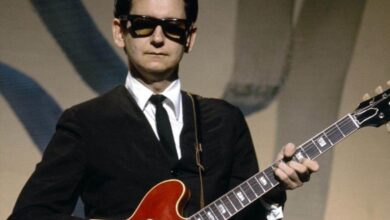Echoes of Change: The Timeless Legacy of Buffalo Springfield’s ‘For What It’s Worth’
In the vibrant tapestry of 1960s rock, few songs encapsulate the era’s spirit like Buffalo Springfield’s “For What It’s Worth.” Released in December 1966, this track swiftly became an anthem, capturing the tensions and transformations of its time. Interestingly, while many associate it with anti-war sentiments, the song’s true inspiration stemmed from events closer to home.
The genesis of “For What It’s Worth” traces back to the Sunset Strip in Los Angeles. In November 1966, the city enforced a strict 10 p.m. curfew to curb the burgeoning youth culture that flocked to the area’s clubs and music venues. This move was met with resistance from young music enthusiasts who felt their freedoms were being curtailed. Tensions culminated on November 12, when approximately 1,000 protesters, including notable figures like Jack Nicholson and Peter Fonda, gathered outside the Pandora’s Box club. The demonstration, initially peaceful, escalated into confrontations with the police, marking a significant moment in the counterculture movement.
Witnessing these events firsthand, Stephen Stills, Buffalo Springfield’s guitarist and vocalist, was moved to pen a song that captured the prevailing unrest. Within weeks, “For What It’s Worth” was written, recorded, and released, resonating deeply with a generation grappling with societal changes. The song’s haunting melody and poignant lyrics encapsulated the uncertainty and desire for understanding that defined the era.
Despite its rapid ascent, “For What It’s Worth” was not part of Buffalo Springfield’s original debut album. However, recognizing its impact, the band reissued the album in March 1967, replacing the track “Baby Don’t Scold Me” with their newfound hit. This decision proved fortuitous, as the song climbed to number seven on the Billboard Hot 100 chart, cementing its place in rock history.
The success of “For What It’s Worth” catapulted Buffalo Springfield into the limelight. Formed in Los Angeles in 1966, the band comprised Stephen Stills, Neil Young, Richie Furay, Bruce Palmer, and Dewey Martin. Their unique blend of folk, rock, and country elements set them apart in a crowded music scene, and their association with the iconic Whisky a Go Go club further solidified their reputation as trailblazers.
The band’s name, Buffalo Springfield, has an interesting origin. While staying at producer Barry Friedman’s house, Stills and Furay noticed a steamroller parked outside, manufactured by the Buffalo Springfield Roller Company. The name struck a chord, and they adopted it, unaware that it would soon become synonymous with a musical revolution.
However, the band’s journey was fraught with challenges. Internal tensions, legal issues, and lineup changes plagued their brief tenure. Bassist Bruce Palmer faced multiple arrests, leading to his deportation and subsequent replacements by various musicians. These disruptions strained relationships within the group, contributing to their eventual disbandment in 1968.
Despite their short-lived existence, Buffalo Springfield’s influence on the music world is undeniable. Their innovative fusion of genres paved the way for future acts, and their members went on to achieve significant success. Stephen Stills co-founded Crosby, Stills & Nash (and later Young), while Neil Young embarked on a prolific solo career, becoming one of rock’s most enduring figures.
The legacy of “For What It’s Worth” extends beyond its initial release. The song has been featured in numerous films, television shows, and documentaries, often used to evoke the tumultuous spirit of the 1960s. Its timeless message of caution and awareness continues to resonate, reminding listeners of the importance of vigilance in the face of societal challenges.
In 2004, Rolling Stone magazine ranked “For What It’s Worth” at number 63 on its list of the 500 Greatest Songs of All Time, a testament to its enduring impact. The song’s haunting refrain, “Stop, hey, what’s that sound,” remains a poignant reminder of a pivotal moment in history, encapsulating the hopes, fears, and aspirations of a generation.
The story behind “For What It’s Worth” serves as a compelling example of how art can capture and influence societal movements. Born out of a local protest, the song transcended its immediate context to become a universal anthem for change. Its creation underscores the power of music to reflect and shape the cultural zeitgeist, leaving an indelible mark on history.
Reflecting on the song’s creation, Stephen Stills once remarked that the title came about almost by accident. When presenting the song to record executive Ahmet Ertegun, Stills reportedly said, “I have this song here, for what it’s worth, if you want it.” The offhand comment became the song’s title, adding an intriguing footnote to its storied history.
Over the decades, “For What It’s Worth” has been covered by numerous artists, each bringing their unique interpretation to the timeless classic. From The Staple Singers to Cher, the song’s adaptability across genres speaks to its universal appeal and enduring relevance.
Today, more than half a century after its release, “For What It’s Worth” continues to inspire and resonate with new generations. Its message of awareness and reflection remains as pertinent as ever, a testament to Buffalo Springfield’s enduring legacy and the timeless power of music to capture the human experience.



